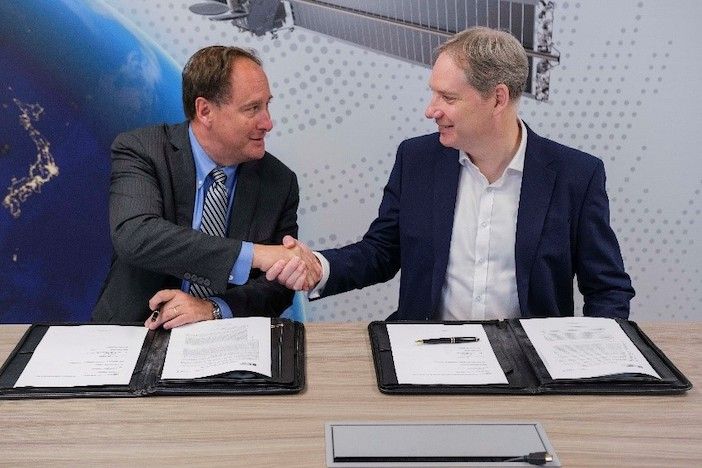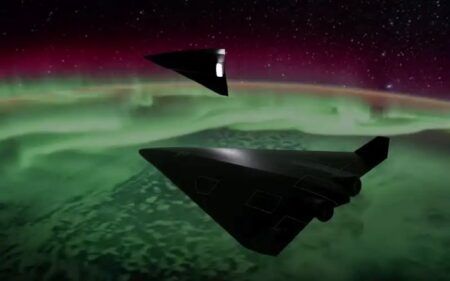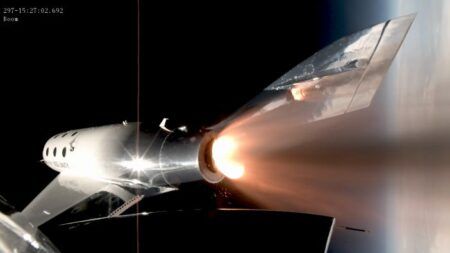Lockheed Martin is partnering with researchers at Northumbria University in Newcastle, UK to develop laser-based communications and power transmission for satellites.
Communications systems based on laser optical technology enable faster and higher capacity data transmission in space, and will be used in the next generation of satellites. The use of laser power beaming to send power through space and recharge satellites is also being developed, but requires more development.
Aerospace and defense company Lockheed Martin’s initial investment at Northumbria University of up to £630,000 (US$654,000) will support projects developing technology in both areas, and sponsor two PhDs in solar physics.
Lockheed Martin’s funding is part of a wider £7 million (US$8.4 million) investment at Northumbria University intended to help develop the north east region of the UK’s space sector.
The funding will support investment in equipment, laboratories and STEM outreach. “We hope that it is the start of a longer-term engagement with Lockheed Martin about training the future workforce for the space industry in the UK,” said professor John Woodward, faculty pro vice-chancellor for engineering and environment at Northumbria University.
Space and solar physics research is an area of excellence at Northumbria University, which has recently invested in facilities and expertise to drive its research and education in this area.
Paul Livingston, chief executive of Lockheed Martin UK, said, “I am delighted to announce our initial collaboration with Northumbria University, which demonstrates Lockheed Martin’s commitment to investing in a long-term space industrial base in the UK.”
Nik Smith, regional director UK and Europe, Lockheed Martin UK Space said, “We are exploring how we can work together on technology that researchers at Northumbria are already working on. We want to start developing technology, IP and a manufacturing base in the UK that will support our global customer base.”
Earlier this year Lockheed Martin said it is exploring options to establish a new R&D and satellite manufacturing facility in the North East which could support up to 2,300 jobs.
The company is also working with the UK Space Agency to conduct northern Europe’s first vertical satellite launch from the recently-approved SaxaVord Spaceport in the Shetland Isles, Scotland.
Formation flying
In the last 18 months researchers at Northumbria University have designed and built an inter-satellite optical communications terminal capable of data transmission at rates far above those the current generation of RF communications are capable of – up to around 10MB/second.
Dr Eamon Scullion, associate professor, mathematics, physics and engineering at Northumbria University said, “Optical communications can achieve up to gigabytes per second. The future of space comms is in the optical domain.”

The laser-based satellite communications R&D was conducted as part of a space mission concept to examine magnetic fields around the sun, including the monitoring of solar flares. This would require formation flying of satellites and optical communications to transmit large amounts of data quickly.
The technology could also be used in future commercial and military satellites. “The enabling technology of laser communications will be fundamental for future constellations of satellites, which will be operating in swarms and in formation,” said Smith
Manufacturing partner
The laser communications project has already gone through two development phases and has been built for a Cubesat, although it can be fitted to larger spacecraft.
During the next, three year phase of the project Lockheed Martin will help with space qualification testing in thermal vacuum chambers, radiation chambers and vibration chambers.
Scullion said, “Lockheed Martin will also provide know-how for the advanced phases of the project, to help us reach TRL 8 and develop a prototype that is ready to launch.
“Our design is commercially viable because it is scalable. It has been built to be a product for the space market and you couldn’t ask for a better manufacturing partner for that than Lockheed Martin”
Laser power beaming could be used in the future to transmit power that is generated on the Moon to satellites as they move past it, but is further from market.
“The technology can move large amounts of power around using lasers. Laser communications is now, but power beaming is around a decade away before it is commercial. This research allows us to get ahead of the market which is exciting,” Smith said. “It sounds like Star Trek, but we are thinking about it now. Removing solar arrays from satellites gives you more payload and battery space.”





